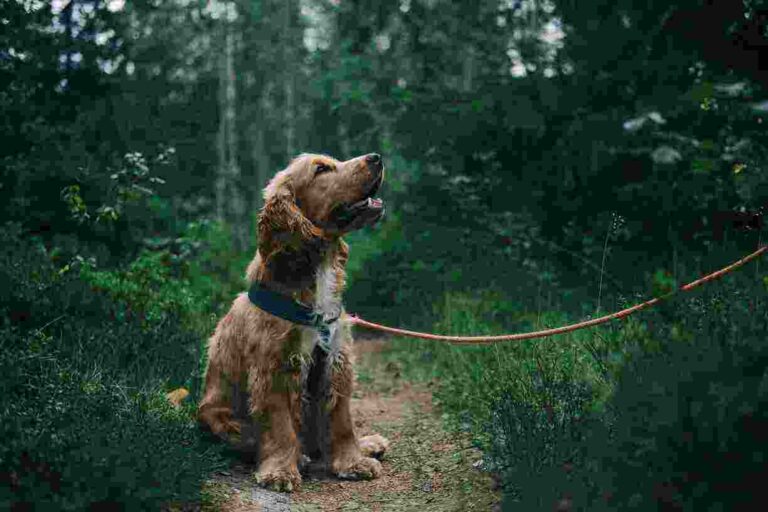
What are Domestic Dogs?
There are hundreds of breeds of dogs in the world today, and they are all referred to as domestic dogs. Every dog from the chihuahua to the Great Danes is a member of the Canis familiaris species. This separates domestic and wild dogs.
The majority of domestic dogs are kept as pets, though some are able to survive on their own. According to the consumer insights study, a third of households have a dog or a puppy. In terms of popularity, the domestic dog is the most popular pet.
Evolutionary origins
The gray wolf is not the species of wolf that all dogs descend from. According to the evidence, the wolf’s ancestors to modern dogs were from Asia. Scientists are still trying to understand what caused dogs to grow up.
It’s not clear when dogs broke off from their wild ancestors, but genetics suggest that it happened between 15,000 and 30,000 years ago.
Most scientists think the process of wolves becoming domesticated dogs began as wolves became more comfortable with humans. Wolves may have begun this path by eating human scraps. Humans might have encouraged wolves to live near each other by feeding them. It is possible that the wolves were welcomed into the human home and eventually bred to encourage certain characteristics. Over the course of thousands of years, all of this is believed to have unfolded.
Modern Working Dogs
Even though people rely less on dogs for daily tasks, there are still many modern jobs for canines.
Dogs help law enforcement by sniffing out drugs, explosives, and even electronics because their sense of smell is between 10,000 and 100,000 times better than our own. Conservators can use their super-powered schnozzes to find and protect rare species.
Search and rescue teams should be assisted in the wake of disasters. Military operations rely on dogs trained to warn of explosives and enemies. Police are looking for jail escapees or the bodies of murder victims. Drugs, elephant ivory, and other illegal items are searched for by customs officials with some partners. Others lead the way in patrolling cargo ships for rats that might escape at distant harbors or exposing forest insect pests in wood from abroad.
Dogs can detect early signs of Parkinson’s disease, diabetes, several types of cancer oncoming epileptic seizures, and antibiotic-resistant bacteria. They help people with post-traumatic stress disorder manage their anxiety, as well as guide the blind and deafness.

Living with Dogs
According to a study, less than 5 percent of dogs in shelters are pure breeds. A spectrum of temperaments can be found in these animals, just as dogs come in all sizes, shapes, and colors. A cute cocker spaniel might nip at your finger without thinking twice, whereas a bulldog might look fierce but be a good pet.
If children are taught to always exercise caution around a dog they do not know, they will be more careful. Kids should ask the dog’s owner for permission before playing with the animal. The dog will be more comfortable with a new person before reaching behind its head where it can’t see what you’re doing if you give it an outstretched hand. Children shouldn’t put their faces near the dog’s muzzle. Always put the Safety of Children First!
The yipping and tail-wagging your dog does when you grab a bag of treats is from when it needed to communicate with other members of its social group. A wild canine would prepare its sleeping area by digging at the carpet or a dog bed, and chasing sticks and balls might be linked to the pursuit of prey. Each time a dog stops to sniff a fire hydrant, it’s analyzing the urine left behind by the other dog.
We don’t take these behaviors for granted because our dogs are our best friends.
Dog Breeds
Since prehistoric times, people have been breeding animals. Domestic dogs were created by wolves, the earliest dog breeders. Dogs have been bred from the beginning to perform various tasks. Among the earliest jobs are hunting, guard dogs, and herding.
Humans have bred dogs to be best suited for the work expected of them. The sleek Greyhound types bred to chase fleet-footed prey, and the huge mastiff types used as guard dogs and warriors, are two ancient examples of dogs bred for specific jobs.
Dogs became more sophisticated as humans became more advanced. Breeds of dogs custom-bred to suit the local needs and circumstances emerged. The Irish Wolfhound and the dainty Italian Greyhound were created from the Greyhound. You’d never mistake one of the three for another.
When is a dog a breed and not just a type of dog? One of the simplest ways to define a breed is to say that it always “breeds true.” This means that if you breed an Irish Setter to another Irish Setter, they will be instantly recognizable as Irish Setters. Most people join a Kennel Club to learn more about the breeds of dogs that they are interested in.
Each breed’s ideal physical traits, movement, and temperament are set down in a document called a “breed standard.”
Many of the dogs you know and love are the result of breeding between individuals with certain desirable qualities. The ancient peoples began breeding dogs that were best able to survive and work in the cold. The family of sled dogs would include breeds such as huskies and malamutes that still exist today.
Humans bred German shepherds for their ability to herd livestock, Labrador retrievers for their ability to collect ducks, and sausage-shaped dachshunds for their ability to run after a badger. Home protection and vermin control are two of the human needs that were filled with more than one breed.

Affenpinscher
Afghan hound
Airedale terrier
Akita
Alaskan Malamute
American Staffordshire terrier
American water spaniel
Aussiedoodle
Australian cattle dog
Australian shepherd
Australian terrier
Beagle
Bernedoodle
Basenji
Basset hound
Bearded collie
Bedlington terrier
Bernese mountain dog
Bichon frise
Black and tan coonhound
Bloodhound
Border collie
Border terrier
Borzoi
Boston terrier
Bouvier des Flandres
Boxer
Briard
Brittany
Brussels griffon
Bull terrier
Bulldog
Bullmastiff
Cairn terrier
Canaan dog
Chesapeake Bay retriever
Chihuahua
Chinese crested
Chinese shar-pei
Chow Chow
Clumber spaniel
cocker spaniel
Collie
Curly-coated retriever
Dachshund
Dalmatian
Doberman pinscher
English cocker spaniel
English setter
English springer spaniel
English toy spaniel
Eskimo dog
Finnish Spitz
Flat-coated Retriever
Fox Terrier
Foxhound
French Bulldog
German Shepherd
German Shorthaired Pointer
German Wirehaired Pointer
Golden Retriever
Gordon Setter
Great Dane
Greyhound
Goldendoodle
Irish Setter
Irish Water Spaniel
Irish Wolfhound
Jack Russell Terrier
Japanese Spaniel
Keeshond
Kerry Blue Terrier
Komondor
Kuvasz
Labrador Retriever
Lakeland Terrier
Lhasa Apso
Maltese
Manchester Terrier
Mastiff
Mexican Hairless
Newfoundland
Norwegian Elkhound
Norwich Terrier
Papillon
Pekingese
Pembroke Welsh Corgi
Pointer
Pomeranian
Poodle ( Standard )
Pug
Puli
Rhodesian Ridgeback
Rottweiler
Saint Bernard
Saluki
Samoyed
Schipperke
Schnauzer
Scottish Deerhound
Scottish Terrier
Sealyham Terrier
Shetland Sheepdog
Shih Tzu
Siberian Husky
Silky Terrier
Skye Terrier
Staffordshire Bull Terrier
Soft-coated Wheaten Terrier
Sussex Spaniel
Spitz
Tibetan Terrier
Vizsla
Weimaraner
Welsh terrier
West Highland white terrier
Whippet
Yorkshire Terrier
Dog Care FAQs
What kind of food should I feed my dog?
Dog owners need to be careful when feeding their dogs, especially if they are overweight. Dogs are carnivores and require high protein diets. If you want to give your dog a healthy diet, then you should feed them meat such as beef, chicken, turkey, lamb, fish, and eggs. Vegetables like broccoli, spinach, carrots, peas, beans, and potatoes are also recommended for dogs.
What foods are toxic to dogs?
The list of foods that are toxic to dogs includes onions, garlic, chocolate, grapes, raisins, coffee beans, and alcohol. These foods should be avoided at all costs when feeding your dog. If you suspect your dog has ingested any of these items, contact your veterinarian immediately.
Should I give my dog table scraps?
Yes, you should feed your dog table scraps. This way he gets used to eating food off the floor, which makes him less likely to eat from his bowl. Also, dogs who eat table scraps tend to be healthier and live longer.
How often should I brush my dog’s teeth?
Brushing your dog’s teeth is important to prevent dental disease. Dog’s teeth need to be brushed at least twice per week, preferably after each meal. If you don’t brush your dog’s teeth regularly, he may develop tartar buildup around his gums, which could lead to gum disease.
How often do I need to change my dog’s water bowl?
Dogs should be given fresh drinking water at least once daily, and ideally twice daily. If your dog has access to a pond, lake, river or other source of clean water, he may drink from these sources instead of his bowl. However, dogs who live outside should always have access to clean water.
